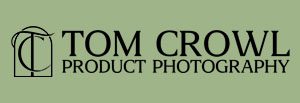Welcome to part eight of my motion blur photography series. In this article I’ll be sharing the answers to motion blur photography’s most frequently asked questions.
If you’ve just happened upon this series, there is a complete index of the articles below so you can easily find the information you need.
I do focus on product photography, but the information provided will be of use in many different genres of the art.
So with that said, let’s get started.
Frequently Asked Questions (FAQs)
1. What is the ideal shutter speed for capturing motion blur in product photography?
The ideal shutter speed depends on the effect you want and the speed of the moving object.
- For subtle motion blur: Start with shutter speeds between 1/30 and 1/60 of a second.
- For pronounced effects: Use slower speeds like 1/10 of a second or even several seconds.
Remember, experimenting is key to finding the perfect shutter speed for your setup.

2. Can I create motion blur effects without using a tripod?
While it’s possible, it’s not recommended—especially in product photography where precision matters.
- Why use a tripod? It stabilizes your camera during long exposures, preventing unwanted blur.
- No tripod? Use a stable surface or makeshift support to keep your camera steady.
3. How do I keep the product sharp while adding motion blur to the background?
You can keep your product sharp and blur the background using a couple of techniques:
- Panning: Move the camera along with the product’s movement.
- Use a Flash: Employ rear curtain sync where the flash fires at the end of the exposure to freeze the product while the background blurs.
- Post-Processing: You can add motion blur to the background during editing using Photoshop or other photo editing softwares.
4. What are common mistakes to avoid when capturing motion blur in product photography?
Beware of these pitfalls:
- Overexposure: Long shutter speeds can lead to washed-out images.
- Camera Shake: Not using a tripod can cause unintended blur.
- Excessive Blur: Applying too much blur can hide important product details.
Tip: Always balance your camera settings, use stabilization tools, and think about your composition.
- How? Use the Motion Blur filter to simulate the effect by adjusting direction and intensity.
- Keep in Mind: In-camera motion blur often looks more natural, but post-processing offers flexibility.

6. Is motion blur suitable for all types of products?
Motion blur works best with products that benefit from a sense of movement or energy.
- Great for: Fashion items, electronics, and certain food and beverage products.
- Use Caution With: Products where clarity is crucial, like fine jewelry. Here, motion blur should be used sparingly or avoided.
7. How can I use motion blur creatively in social media product photography?
Motion blur can make your social media images stand out.
- Create Eye-Catching Content: Use motion blur for animations or cinemagraphs where only parts of the image move.
- Engage Your Audience: Dynamic images grab attention as viewers scroll through their feeds.

- You can adjust shutter speed, aperture, and ISO manually.
- It has a high-resolution sensor to capture the intricate motion blur details.
Conclusion: Unleash Your Creativity with Motion Blur
Motion blur is a powerful tool that adds energy, movement, and artistic flair to your product photos. Whether you’re capturing the flow of fabric, the spin of a watch, or dramatic light trails highlighting a gadget, mastering motion blur can elevate your photography to new heights. Throughout this guide, we’ve covered:- The Basics: Understanding what motion blur is and how it occurs.
- Essential Equipment & Camera Settings: Choosing the right camera, lenses, and accessories.
- Step-by-Step Techniques: How to set up and capture motion blur effectively.
- Advanced Techniques & Troubleshooting: Overcoming common challenges.
- Post-Processing Tips: Enhancing your images with software.
- Creative Ideas: Incorporating motion blur with different products.
- Case Studies: Real-world examples of successful campaigns.
Keep Experimenting
Practice is key. Every product and scenario presents unique challenges and opportunities. Don’t hesitate to try different approaches, settings, and creative ideas. The more you experiment, the more you’ll discover what works best for your style.Make It Your Own
Take these ideas and push the boundaries of what’s possible in product photography. Whether you’re shooting for a commercial campaign or exploring new creative avenues, motion blur can help you tell a more compelling story.And Now It’s Your Turn
Grab your camera and start experimenting with motion blur today. Unleash your creativity and watch your product photography come to life!Discover How Professional Photography Can Elevate Your Brand
Get a Custom Quote Tailored to Your Specific Needs

Take a minute to fill out the form below. Doing so will help me understand your product photography needs. Once I receive your information, I'll reach out to you personally to discuss the project in more detail and create a customized quote for you.
You may also text me at: 410-596-4127 or E-mail me at: tom@tomcrowl.com


